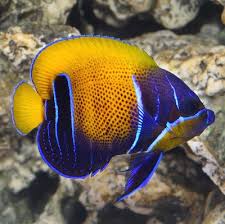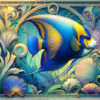Dragons in Martial Arts Films and Heroic Legends of China

In the rich tapestry of Chinese culture, few symbols hold the prominence of the dragon. This mythical creature, known for its majestic form and formidable power, has captured the imagination of generations. In both traditional folklore and modern media, the dragon has come to represent many things: strength, protection, and wisdom. In Chinese martial arts films and heroic legends, the dragon plays a unique role, embodying ideals of power, mastery, and victory over adversity. Through the lens of cinema and folklore, the dragon has become an emblem of heroism and a critical element in many legendary stories.
This article explores the dragon’s role in Chinese martial arts films and heroic legends, looking at its symbolism, how it is portrayed, and its influence on popular culture. From ancient myths to contemporary films, dragons have been integral to shaping the narrative of heroism, skill, and triumph.
1. The Dragon in Chinese Martial Arts Cinema: Symbolism of Strength and Power
Chinese martial arts cinema, also known as kung fu films, has long featured dragons as central motifs, whether symbolically or literally. These films are a celebration of martial prowess, intense discipline, and heroic figures, with dragons often representing the ultimate form of power and grace. The integration of dragons into these films adds depth and mystique to the narrative, highlighting the protagonist’s journey toward mastery.
The Dragon as a Symbol of Ultimate Strength
In many kung fu films, the dragon symbolizes the highest attainable level of martial arts mastery. Characters who train to harness the power of the dragon are often portrayed as wise, disciplined, and supremely skilled. These characters are typically depicted as being on a quest for self-realization or enlightenment, and their connection to the dragon reflects the discipline, focus, and spiritual balance required to achieve greatness in martial arts.
A prime example is Bruce Lee’s iconic film Enter the Dragon (1973), where the dragon symbolizes the ultimate martial artist who transcends mere physical strength to reach a higher state of wisdom and inner peace. In the film, Lee’s character, a skilled martial artist, is chosen to participate in a tournament hosted by a criminal mastermind. The dragon symbolizes Lee’s character’s spiritual and physical mastery, as he embodies the martial artist who has conquered not only his physical enemies but his inner demons as well.
Dragons in Martial Arts Training
The dragon is also an essential figure in various traditional martial arts forms. In many schools of kung fu, the “dragon style” is one of the most respected and revered techniques. The dragon style is known for its flowing movements and the emphasis on agility and flexibility, much like the mythical creature it is named after. Martial artists who specialize in this style are expected to master techniques that require both power and grace.
In martial arts films, the “dragon” style often symbolizes the superior martial artist who has reached the peak of their craft. Films featuring characters using the dragon style frequently highlight the contrast between the raw power of brute force and the graceful yet deadly techniques of the dragon style. This duality makes the dragon a powerful metaphor for the journey of martial artists who strive for a balance between physical prowess and spiritual enlightenment.
2. Dragons in Heroic Legends: Embodiments of Power, Honor, and Wisdom
The dragon also features heavily in Chinese heroic legends, which often depict legendary figures who fight against evil forces, restore justice, or bring peace to the land. These heroes are typically portrayed as possessing extraordinary abilities, and in many cases, they are shown confronting or being guided by dragons in their quests. The dragon serves as both a literal and symbolic character, often embodying power, wisdom, and divine guidance.
The Dragon in the Legend of the Yellow Emperor
One of the most prominent uses of the dragon in Chinese heroic legend is in the story of the Yellow Emperor (Huangdi), a legendary ruler and hero who is said to have founded Chinese civilization. The Yellow Emperor’s association with the dragon is deep and multifaceted. It is said that he was born under the auspices of a dragon, and throughout his reign, the dragon was his emblem. The dragon in this legend serves as a symbol of imperial power and divine favor, reinforcing the Yellow Emperor’s legitimacy as a ruler.
According to legend, the Yellow Emperor’s rule was marked by great success in both warfare and governance, and the dragon served as both his protector and his guiding force. The dragon is often depicted as an embodiment of the cosmic order, helping the Yellow Emperor defeat his enemies and establish a unified China. In this context, the dragon symbolizes the balance between strength and wisdom, and its association with the Yellow Emperor highlights the qualities of leadership, courage, and virtue.
The Dragon and the Hero’s Journey in Chinese Mythology
In many Chinese myths, the dragon appears as a test or guide for the hero, often marking the point of transformation or spiritual growth. For instance, in the legend of the archer Hou Yi, a hero who sought to save the world from ten suns, the dragon is seen as an obstacle that the hero must confront. In this myth, the dragon is often interpreted as a challenge that must be overcome through great courage and wisdom, reflecting the broader theme of personal growth that runs through Chinese heroic legends.
Similarly, in the famous tale of Journey to the West, a classical Chinese novel written by Wu Cheng’en, the protagonist, the Monkey King, is associated with numerous mythical creatures, including the dragon. The dragon in Journey to the West represents a divine force, one that aids the hero in his quest for enlightenment. The dragon is both a helper and a symbol of the obstacles the heroes must overcome, embodying the challenges of the spiritual journey.
3. Dragons and Martial Arts Legends: From Fiction to Film
Martial arts legends often feature dragons as symbols of divine intervention or extraordinary skill. These legends often focus on legendary heroes who possess supernatural abilities, and dragons are central to their narratives. Whether dragons are portrayed as mentors or antagonists, they play a key role in shaping the journey of the hero.
Dragons as Mentors and Protectors
In some martial arts legends, the dragon is depicted as a mentor or teacher who guides the hero in their journey toward mastery. This relationship between the hero and the dragon reflects the idea of balance between strength and wisdom, a key theme in Chinese martial arts. The dragon serves not only as a symbol of power but also as a guardian of knowledge and spiritual wisdom.
In films such as The Dragon Gate Inn (1967) and The Grandmaster (2013), the dragon is often linked to martial arts masters who teach their disciples the art of combat and the principles of moral conduct. These dragons are frequently portrayed as protectors of tradition and honor, guiding the heroes toward their destinies. In this way, the dragon transcends its physical form and becomes a symbolic figure representing spiritual mastery and enlightenment.
Dragons as Adversaries and Tests for Heroes
In contrast, some films and legends depict dragons as antagonistic forces that challenge the hero’s abilities and resolve. These dragons are often portrayed as fearsome opponents that test the hero’s courage, intelligence, and martial prowess. In films like The Dragon and the Tiger (1980), the dragon serves as an enemy that the hero must defeat to prove their worthiness.
The encounter with the dragon in these stories is often the hero’s final trial, marking their ultimate triumph. The dragon represents the embodiment of evil or chaos, and defeating it signifies the hero’s victory over darkness and the realization of their full potential. In this way, the dragon serves as both a literal and figurative obstacle that must be overcome in the hero’s quest for honor and justice.
4. The Dragon in Contemporary Martial Arts Films and Pop Culture
In modern martial arts films, the dragon’s influence continues to be felt, though it has evolved alongside contemporary filmmaking techniques. Films like Crouching Tiger, Hidden Dragon (2000) and Kung Fu Panda (2008) maintain the dragon as an essential cultural symbol. While the dragon may no longer appear as a literal, mythical creature in all films, its symbolism as a representation of inner strength, wisdom, and mastery remains strong.
In Crouching Tiger, Hidden Dragon, the dragon is a metaphor for the spiritual journey of the characters, highlighting themes of control, restraint, and self-mastery. Similarly, in Kung Fu Panda, the dragon represents the pinnacle of martial arts achievement, symbolized by the legendary Dragon Warrior who has mastered both physical strength and wisdom.
These films demonstrate that the dragon’s role in Chinese martial arts and heroic narratives is not confined to ancient myths but continues to resonate in contemporary culture, maintaining its status as a symbol of heroism, power, and enlightenment.
5. Conclusion: The Enduring Legacy of the Dragon in Martial Arts and Heroic Legends
The dragon’s role in Chinese martial arts films and heroic legends is an enduring testament to its significance in Chinese culture. Whether as a symbol of power, wisdom, or divine protection, the dragon represents the ultimate mastery that martial artists strive for. From ancient myths to contemporary films, the dragon’s influence has shaped the portrayal of heroes and warriors, inspiring audiences with its grace, strength, and mystique.
As both a symbol and a literal figure, the dragon continues to be a central part of Chinese martial arts and mythology, embodying the ideals of bravery, wisdom, and transformation. Its presence in films, folklore, and legends ensures that its legacy will continue to inspire future generations, reminding us of the timeless connection between mythology, martial arts, and heroism in Chinese culture.

